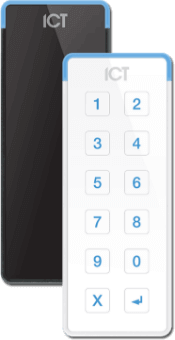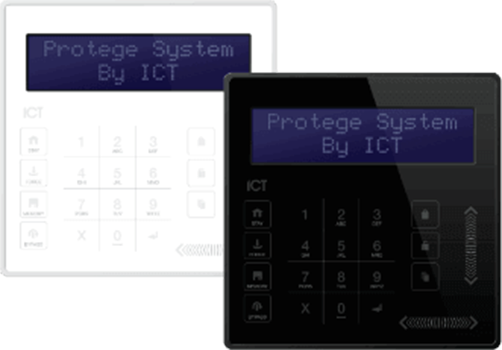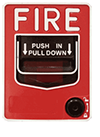Video MGMT System
 Access Control
Access Control
Voice & Data Wiring
 Burglar Alarm
Burglar Alarm
 Fire Alarm
Fire Alarm
Video MGMT System
Voice & Data Wiring
Looking for a reliable, business-grade way to transmit your video data when physical cabling isn’t possible?
The team at Mammoth Security, Connecticut’s one-stop shop for commercial-grade security systems, is here to help you select the right data transmission methods for your site's unique layout and security concerns.
Wireless cameras transmit surveillance data through the air as radio frequency signals to either point-to-point (PtP) antennas or Wi-Fi routers. From there, the footage is transmitted to on-site servers or the cloud for streaming, organization, and storage.
While physical cabling is the gold standard for connectingcommercial-grade security cameras to system servers, there are scenarios where cable installation is impractical or impossible. In such cases, leverage point-to-point antennas or Wi-Fi routers for wireless data transmission.
When it comes to signal range, real-time streaming, and maintenance of video quality, point-to-point antennas are far more powerful than Wi-Fi routers.
Unlike Wi-Fi, which is susceptible to signal interference from other electronic devices, point-to-point antennas by Mammoth Security send data over dedicated wireless links that are inaccessible to Wi-Fi traffic.
The result? Stable, high-resolution video coverage even when Wi-Fi's public bandwidth is crowded with data from numerous competing wireless devices.
Point-to-point antennas cover vast areas (up to ten thousand feet, or two miles, in diameter) without signal deterioration. This extended range is crucial for large properties that must be monitored on a centralized video system.
Latency, in the context of surveillance, refers to the delay between the moment a camera transmits video data and the moment another device, such as a video server, receives it.
Point-to-point antenna systems by Mammoth Security support near-instantaneous (low latency) data transmission, thereby enabling reliable footage capture at all times, especially during security breaches and emergencies.
Use point-to-point antennas to expand your surveillance network without worrying about Wi-Fi congestion and Wi-Fi bandwidth limitations.
Whether the issue is rain, snow, or extreme temperatures, point-to-point antennas by Mammoth Security are robustly built to withstand challenging weather conditions and maintain uninterrupted surveillance coverage.
Wireless security cameras send their video data through the air as radio wave frequencies. Radio wave frequencies are measured in hertz (Hz), which denotes the rate at which a radio wave vibrates.
A frequency band is the range of radio wave frequencies that a wireless system uses to receive and transmit data. The frequency band a particular wireless device operates over affects the range, speed, and strength of its transmission capabilities.
High-frequency bands (so-called because of the faster vibration speeds of the radio waves they use) support fast data transmission but have a reduced signal range. Conversely, low-frequency bands transmit frequency signals farther but at a slower pace, making them vulnerable to latency and data degradation.
Point-to-point (PtP) antennas transmit and receive data over greater distances than Wi-Fi despite typically operating on higher-frequency bands (such as 60GHz) that reduce signal range. The following factors make long-distance PtP antenna transmission possible even at high frequencies:
Physical cabling is hands down the most secure and reliable transmission route for video data.
With cabling, no information is transmitted through the air. Rather, cables provide direct physical connections between cameras and servers, thereby maintaining data integrity during transmission.
While cabling is the go-to option for stable data transmission, there are situations where wireless transmission is necessary.
On properties like business campuses, college campuses, and apartment complexes, point-to-point antennas unify large CCTV networks on a single interface for easy monitoring and management.
What's more, the reach of PtP antennas can be extended beyond two miles by using high-gain antennas for amplification.
In vast, open spaces like national parks, wildlife preserves, and farmlands (where trenching for traditional cabling is often prohibitively expensive), point-to-point antennas enable monitoring that's reliable and minimally invasive to the natural environment.
When dealing with historic buildings where architectural integrity is crucial, point-to-point wireless cameras are a reliable, less invasive alternative to cabling infrastructure.
In scenarios where time is of the essence, such as pop-up events or temporary installations, Wi-Fi cameras can be set up in a matter of minutes. This capacity for quick deployment often makes Wi-Fi the best option for one-time events, temporary construction projects, and other applications where full-scale camera infrastructure would be wasteful or take too long.

Whenever you use Wi-Fi for high-value footage transmission, be sure to select cameras with microSD card slots built into them. You'll then be able to store data directly from the source on SD chips for later retrieval in the event of data loss, dropped connections, and other common Wi-Fi problems.
Whenever you use Wi-Fi for high-value footage transmission, be sure to select cameras with microSD card slots built into them. You'll then be able to store data directly from the source on SD chips for later retrieval in the event of data loss, dropped connections, and other common Wi-Fi problems. [end of call out box]
Finding a reliable and trustworthy dealer-installer for business security is a challenge, but don't trust your security to just any crew. Make sure they meet the following criteria:
Few installers understand the many factors that go into developing cost-effective, long-lasting security systems for businesses and organizations.
That's where Mammoth Security comes in. Whether it's picking cameras with the right features and placing them to avoid blind spots or selecting a video management system and a method for data transmission, our team leverages our experience, knowledge, and commitment to world-class workmanship to provide the powerful security systems we're famous for.
In today's ever-developing security market, you need a dealer and installer that keeps up with the latest security products and technologies, their strengths and weaknesses, and how they enhance security, optimize workflows, or save money.
At Mammoth Security, we're always on top of developments in the field of security technology. That's how we make sure our customers have access to the most useful and advanced security solutions available today.
We treat our customers' security as if it were our own.
As Connecticut's one-stop shop for advanced security products and installations, Mammoth Security provides a wide range of top-grade security solutions for businesses and organizations of all sizes and complexities.
Whether you need surveillance, access control, fire safety, intrusion detection, structured cabling, or an integrated, all-in-one security system, there’s no need to juggle different contractors when you can count on Mammoth for it all.
Ready to build or upgrade your hardwired or wireless CCTV surveillance system?
Contact us with any questions you have and take advantage of a 100% FREE, zero-obligation site survey and assessment by filling out the form.
We'll schedule a friendly expert to walk through your property with you, identify your vulnerabilities, answer your questions, and help you start developing a security plan that's tailor-made for your site.
Point-to-point antennas can wirelessly receive and transmit video data as far as two miles without deterioration. Wireless security cameras operating over Wi-Fi, on the other hand, can receive and transmit video as far away as three hundred feet. But that's only outdoors in clear conditions without walls or large objects interrupting the signal. In most indoor environments, wireless routers have a signal range below 125 feet.
Point-to-point antennas comfortably transmit data-heavy video streams to servers using direct wireless transmission links that are separate from Wi-Fi's often crowded public bandwidth.
While wireless cameras use Wi-Fi to transmit data, most still need a physical cord to connect to a power source. On the other hand, completely wireless cameras, also known as "wire-free" cameras, are battery-powered.
Wireless cameras absolutely need electricity to work. This can be an issue in the event of a power outage, but cameras with battery backup can continue functioning without interruption, even during power outages.
A wireless security camera may use battery power, solar power, or a traditional power cord. Wireless cams are so-called because they transmit their footage wirelessly, but many require physical cords for power. "Wire-free" cameras, on the other hand, are battery- or solar-powered to provide a truly wireless video surveillance system. But beware: solar-powered camera systems are usually a terrible idea, especially in low-sunshine regions like New England.
Battery-operated cameras have battery lives that last from less than six months to up to two years. The length of a wire-free camera's battery life depends on factors like the camera's video quality, frames per second, and whether or not the camera is set to record footage continuously or only upon detecting motion.

Wireless
IP Cameras
Wireless cameras are not reliable enough for commercial use yet. Instead, we use purpose-built antennae to connect hardwired cameras on light poles and buildings.

Phone App
For Camera Systems
Watch live or previously recorded footage on any mobile device. Save it to your phone and e-mail it just like any other video or image.

Increased Resolution
Of 4096×2160
4k or 8MP cameras represent the best value at the moment. Depending on your situation, a 30+ megapixel camera can be installed allowing you to read a seat number from the opposite end of a football field.

Employ The Same Technology As These Companies:


